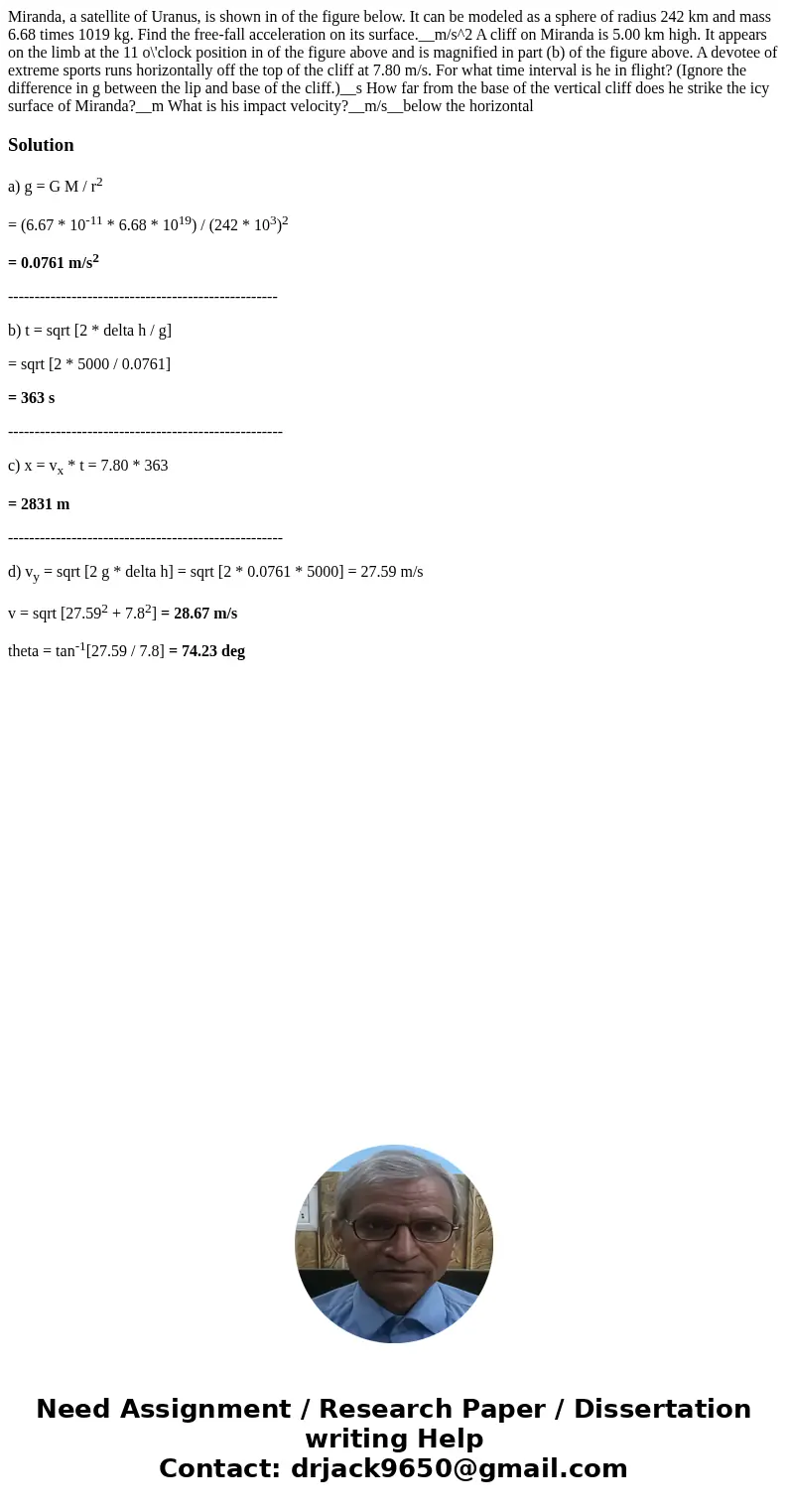Miranda a satellite of Uranus is shown in of the figure belo
Miranda, a satellite of Uranus, is shown in of the figure below. It can be modeled as a sphere of radius 242 km and mass 6.68 times 1019 kg. Find the free-fall acceleration on its surface.__m/s^2 A cliff on Miranda is 5.00 km high. It appears on the limb at the 11 o\'clock position in of the figure above and is magnified in part (b) of the figure above. A devotee of extreme sports runs horizontally off the top of the cliff at 7.80 m/s. For what time interval is he in flight? (Ignore the difference in g between the lip and base of the cliff.)__s How far from the base of the vertical cliff does he strike the icy surface of Miranda?__m What is his impact velocity?__m/s__below the horizontal
Solution
a) g = G M / r2
= (6.67 * 10-11 * 6.68 * 1019) / (242 * 103)2
= 0.0761 m/s2
---------------------------------------------------
b) t = sqrt [2 * delta h / g]
= sqrt [2 * 5000 / 0.0761]
= 363 s
----------------------------------------------------
c) x = vx * t = 7.80 * 363
= 2831 m
----------------------------------------------------
d) vy = sqrt [2 g * delta h] = sqrt [2 * 0.0761 * 5000] = 27.59 m/s
v = sqrt [27.592 + 7.82] = 28.67 m/s
theta = tan-1[27.59 / 7.8] = 74.23 deg

 Homework Sourse
Homework Sourse